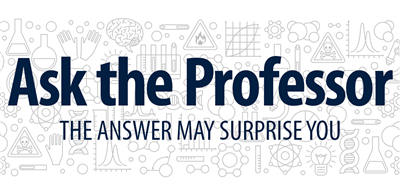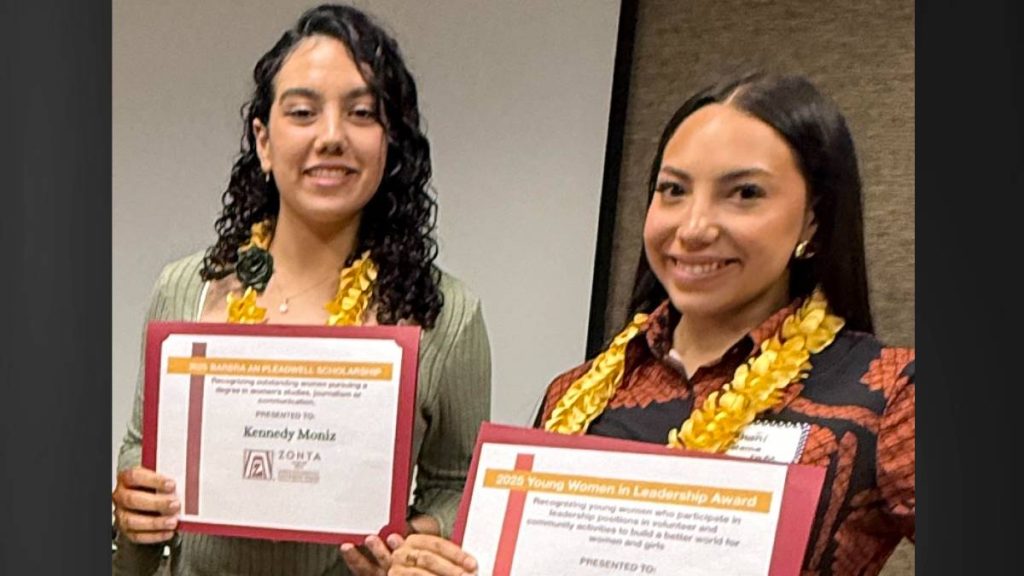ActionAid’s campaign is a defiant stand against child marriage – The Drum

Campaign Analysis: ActionAid’s “I’ll Marry When I Want” and its Contribution to Sustainable Development Goals
Introduction and Campaign Overview
A new campaign by the international charity ActionAid, titled “I’ll Marry When I Want,” has been launched to address the global issue of child marriage. This practice is identified as a significant human rights violation affecting over 640 million women and girls globally. The campaign, developed by the creative agency Dude Milan, focuses on promoting girls’ rights and empowerment, directly challenging the societal pressures that lead to early and forced marriage.
Alignment with Sustainable Development Goal 5: Gender Equality
The campaign’s primary objective is in direct alignment with SDG 5: Achieve gender equality and empower all women and girls. Specifically, it targets the elimination of harmful practices as outlined in Target 5.3.
- Target 5.3: The campaign’s core mission is to eliminate child, early, and forced marriage by empowering girls to reject imposed destinies.
- Empowerment: By presenting a “manifesto of freedom,” the initiative challenges traditional gender roles and advocates for girls’ autonomy over their own lives and futures.
- Narrative of Strength: The campaign deliberately shifts the focus from victimhood to strength, portraying girls as powerful agents of change capable of claiming their freedom.
Impact on Associated SDGs
Beyond its direct contribution to SDG 5, the campaign’s efforts have a cascading effect on several other Sustainable Development Goals.
- SDG 4: Quality Education
Ending child marriage is critical for ensuring girls can complete their education. The campaign film, featuring students from Buwongo Primary School in Uganda, visually reinforces the link between preventing early marriage and securing educational opportunities for girls, contributing to Target 4.1 (universal primary and secondary education) and Target 4.5 (eliminate gender disparities in education). - SDG 3: Good Health and Well-being
By advocating against early marriage, the campaign indirectly addresses the severe health risks associated with early pregnancy and childbirth, supporting Target 3.7 (universal access to sexual and reproductive health-care services). - SDG 10: Reduced Inequalities & SDG 16: Peace, Justice and Strong Institutions
Child marriage is a fundamental driver of gender inequality. The campaign’s focus on empowerment helps reduce these inequalities (Target 10.2). Furthermore, by framing the issue as a violation of girls’ rights, it supports Target 16.2, which aims to end abuse, exploitation, and all forms of violence against children.
Creative Strategy and Execution
The campaign’s execution is designed to deliver a message of empowerment and rebellion against oppressive norms.
- Film Component: A central film, directed by Zee Ntuli, features young girls symbolically destroying wedding-related items. This act of “playful destruction” visualizes their rejection of forced marriage and their claim to freedom. The narrative is voiced through a poem by 13-year-old Malawian poet Eileen Piri.
- Supporting Media: The message is amplified through a static social and display campaign featuring the film’s protagonists in scenes of joyful rebellion.
- Dissemination Plan: The campaign was launched in Italy on October 28 across multiple platforms, including social media, connected TV, cinema, and digital PR, utilizing various formats from 6-second to 60-second cuts.
Partnerships for the Goals (SDG 17)
The collaboration between ActionAid, an international non-profit organization, and Dude Milan, an independent creative agency, exemplifies SDG 17: Strengthen the means of implementation and revitalize the global partnership for sustainable development. This partnership leverages creative communication to advocate for social change and advance the global goals.
Analysis of SDGs in the Article
-
Which SDGs are addressed or connected to the issues highlighted in the article?
The article primarily addresses issues related to several Sustainable Development Goals (SDGs) through its focus on the ‘I’ll Marry When I Want’ campaign against child marriage. The most relevant SDGs are:
- SDG 5: Gender Equality: This is the central theme of the article. The campaign’s goal to fight child marriage, challenge traditional gender roles, and promote girls’ rights and empowerment directly aligns with achieving gender equality. The article highlights the campaign’s focus on “girls’ rights” and “girls’ empowerment” to say “no to an imposed destiny.”
- SDG 16: Peace, Justice and Strong Institutions: Child marriage is a form of violence and exploitation against children. The article describes it as a “violation affecting over 640 million women and girls worldwide.” By aiming to end this harmful practice, the campaign contributes to the goal of protecting children from abuse and violence.
- SDG 4: Quality Education: Although not the main focus, this SDG is implicitly connected. The campaign features young girls from “Buwongo Primary School in Uganda.” This setting implies that education is a crucial alternative to early marriage, empowering girls to choose a different future. The campaign’s message supports keeping girls in school to control their own destinies.
- SDG 17: Partnerships for the Goals: The article explicitly details a partnership to achieve the campaign’s goals. It mentions the collaboration between the “international charity ActionAid” and the “independent agency Dude Milan,” which created the campaign. This cross-sector collaboration is a key aspect of SDG 17.
-
What specific targets under those SDGs can be identified based on the article’s content?
Based on the issues discussed, several specific SDG targets can be identified:
- Target 5.3 (under SDG 5): “Eliminate all harmful practices, such as child, early and forced marriage and female genital mutilation.” The article is entirely focused on a campaign whose purpose is to fight “the global fight against child marriage,” making this the most direct and relevant target.
- Target 16.2 (under SDG 16): “End abuse, exploitation, trafficking and all forms of violence against and torture of children.” The article frames child marriage as a “violation,” and this practice is widely recognized as a form of abuse and exploitation of children, directly connecting it to this target.
- Target 4.5 (under SDG 4): “By 2030, eliminate gender disparities in education and ensure equal access to all levels of education…” The involvement of girls from “Buwongo Primary School” and the campaign’s message of choosing one’s own destiny strongly imply that enabling girls to continue their education instead of being forced into marriage is a key objective, aligning with the goal of eliminating gender disparities in education.
- Target 17.17 (under SDG 17): “Encourage and promote effective public, public-private and civil society partnerships…” The article provides a clear example of this target in action by describing the partnership between ActionAid, a civil society organization, and Dude Milan, a private-sector creative agency, to launch the campaign.
-
Are there any indicators mentioned or implied in the article that can be used to measure progress towards the identified targets?
The article mentions and implies indicators that can be used to track progress:
- Indicator for Target 5.3: The article provides a direct quantitative indicator by stating that child marriage is a “violation affecting over 640 million women and girls worldwide.” This figure serves as a baseline measurement of the scale of the problem. Progress would be measured by a reduction in this number, which corresponds to the official indicator 5.3.1 (Proportion of women married before age 18).
- Implied Indicator for Target 4.5: While no specific data is given, the mention of “Buwongo Primary School” implies that indicators such as girls’ school enrollment rates, attendance, and completion rates are relevant metrics for measuring progress. A successful fight against child marriage would correlate with an increase in these educational indicators for girls.
- Qualitative Indicators for Empowerment (SDG 5): The article describes qualitative indicators of success. The campaign aims for a future where girls have “strength,” “power, freedom and control over their own destinies,” and “the ability to say no to an imposed destiny.” Measuring shifts in social norms and girls’ self-reported sense of agency could serve as indicators of progress.
- Indicator for Target 17.17: The existence of the partnership between ActionAid and Dude Milan is itself an indicator of a successful cross-sector collaboration. The launch of the campaign across multiple platforms (“connected TV, cinema and digital PR”) serves as a metric for the reach and impact of this partnership.
SDGs, Targets, and Indicators Summary
| SDGs | Targets | Indicators (Mentioned or Implied in the Article) |
|---|---|---|
| SDG 5: Gender Equality | Target 5.3: Eliminate all harmful practices, such as child, early and forced marriage. | The number of women and girls affected by child marriage, stated as “over 640 million worldwide.” |
| SDG 16: Peace, Justice and Strong Institutions | Target 16.2: End abuse, exploitation, trafficking and all forms of violence against children. | The prevalence of child marriage as a “violation” and form of abuse against children. |
| SDG 4: Quality Education | Target 4.5: Eliminate gender disparities in education and ensure equal access. | Implied: School enrollment and completion rates for girls (referenced by the involvement of “Buwongo Primary School”). |
| SDG 17: Partnerships for the Goals | Target 17.17: Encourage and promote effective public-private and civil society partnerships. | The existence and execution of the partnership between the charity ActionAid and the agency Dude Milan. |
Source: thedrum.com
What is Your Reaction?
 Like
0
Like
0
 Dislike
0
Dislike
0
 Love
0
Love
0
 Funny
0
Funny
0
 Angry
0
Angry
0
 Sad
0
Sad
0
 Wow
0
Wow
0
















































:focal(1500,1000)/https://media.globalcitizen.org/a6/9a/a69a4720-d8a1-4715-b596-18738d03c05c/rotary_polio_hero_image.jpg?#)







/countries/sri-lanka/photo-credit---dmc-sri-lanka.tmb-1200v.jpg?sfvrsn=dc298bcc_1#)



















